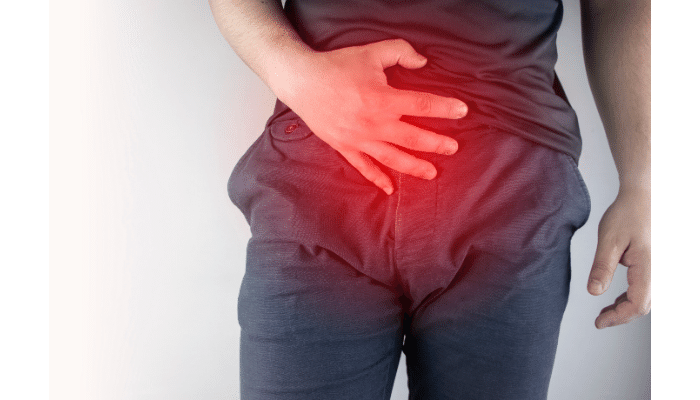What Is Inguinal Hernia?
An anatomical structure in the shape of a ring in the inguinal area remains open from birth or the ring or the muscular tissue on the area gets weakened in time and part of the intestine or fatty tissue protrudes through a weak spot in the abdominal muscles. The indications for inguinal hernia is swelling and pain in the groin. Regardless of age, the only treatment is surgery.
What are the Symptoms of Inguinal Hernia?
- Swelling and pain in the inguen
- Swelling that increases when standing, straining, coughing and gets lost when lying flat
- Only pain in early stage hernias
Why does Inguinal Hernia Occur?
It occurs as a result of weakening or tearing of the supporting layer, which prevents the intestines from bulging outwards from the abdomen. The weakness of this layer might be congenital or be caused by overexertion (straining, heavy lifting, coughing, demanding sports).
What are the Types of Inguinal Hernia?
There are 2 types of inguinal hernia: direct and indirect. The complaints of patients are swelling and pain in the inguen in both cases. The type of inguinal hernia will only change the technique of surgery. The findings are similar.
What is Femoral Hernia?
It is a type of hernia that causes the same complaints as inguinal hernia and mostly occurs in women. Complaints and treatment options are the same as inguinal hernia.
What is Strangulated Inguinal Hernia?
The organ that bulges through the hernia sac is usually the small intestine. The small intestine part bulges through the hernia sac wile walking, coughing, straining and causes swelling, when laid flat, it goes back into the abdomen and the swelling disappears. However, the small intestine bulging through the hernia sac can be trapped here over time and the blood flow of the trapped small intestine can be disrupted. This situation is called strangulated inguinal hernia. The medical name thereof is incarcerated inguinal hernia.
Get Online Appointment/Information
Can Inguinal Hernia Be Treated with Medication?
It is not possible to shrink, remedy, remove inguinal hernia with medication. On the contrary, waiting can cause the hernia to grow. The only treatment method is surgery, regardless of the age.
Is Inguinal Hernia Dangerous?
If the intestines or organs bulging through the inguinal hernia are trapped in the hernia sac, a condition called strangulated hernia occurs and might cause conditions leading up to intestinal necrosis and posing fatal risks.
How are Inguinal Hernia Surgeries Performed?
Inguinal hernia surgeries can be performed by open and closed methods. In some patients it might be necessary to use a mesh patch during the surgery, considering the clinical picture and the condition of the patient.
What is the Mesh Patch Used in Inguinal Hernia Surgeries?
It is a product based on the principle of supporting the weakened supporting layer that causes hernia and enabling the body to form a new supporting layer against this mesh patch.
Are Stitches and the Mesh Patches Used in Inguinal Hernia Surgeries Important?
Given that some stitches and the mesh patch used in inguinal hernia surgeries will remain in your body for a lifetime, it is obvious that their quality and structural characteristics are very important. Unfortunately, as in all sectors, there are poor quality products in the market in health sector as well and they might pose a threat against your health. You can learn the brand, structure, place of manufacture and quality of the material to be used in your surgery, from your doctor before the surgery.
Does Inguinal Hernia Recur?
When the appropriate surgery technique is applied by an experienced surgeon in inguinal hernia, the risk of recurrence is below 1%.
When is It Possible to Continue Daily Life After the Surgery?
1 day after surgery, you can start your daily activities.
Will the stitches be removed after surgery?
We use plastic stitches to close the surgical site, therefore it is not necessary to remove the stitches. Site of stitches is dressed on for 2 days and after that, there is no obstacle to taking a shower.
 TR
TR EN
EN AR
AR


